
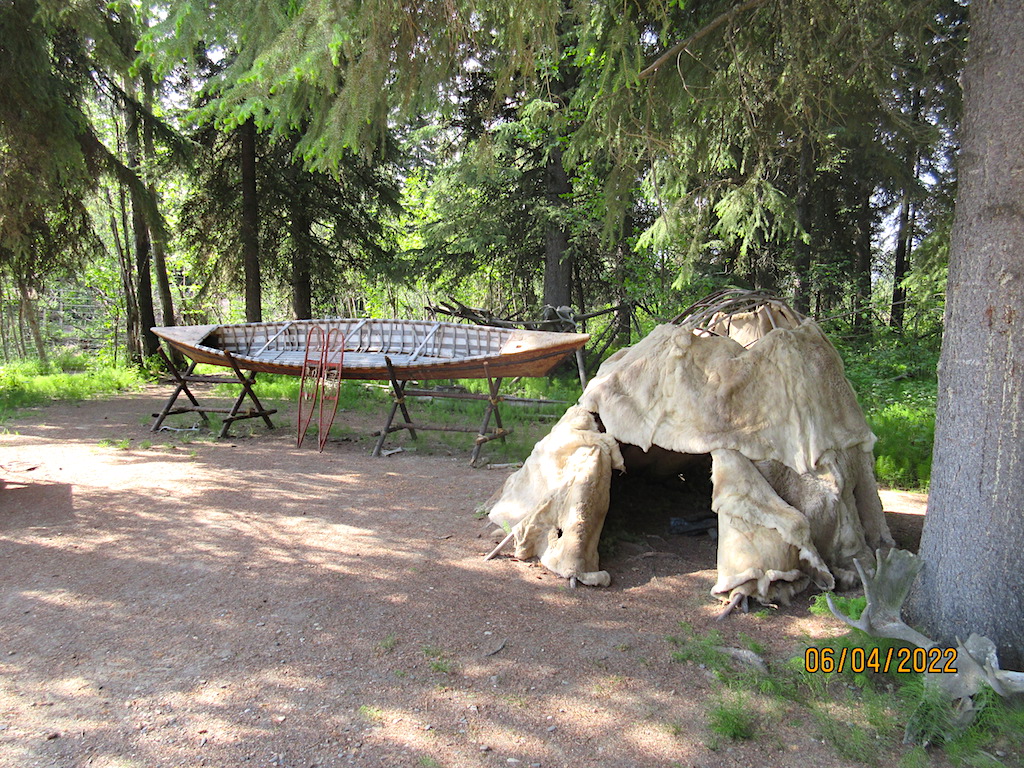

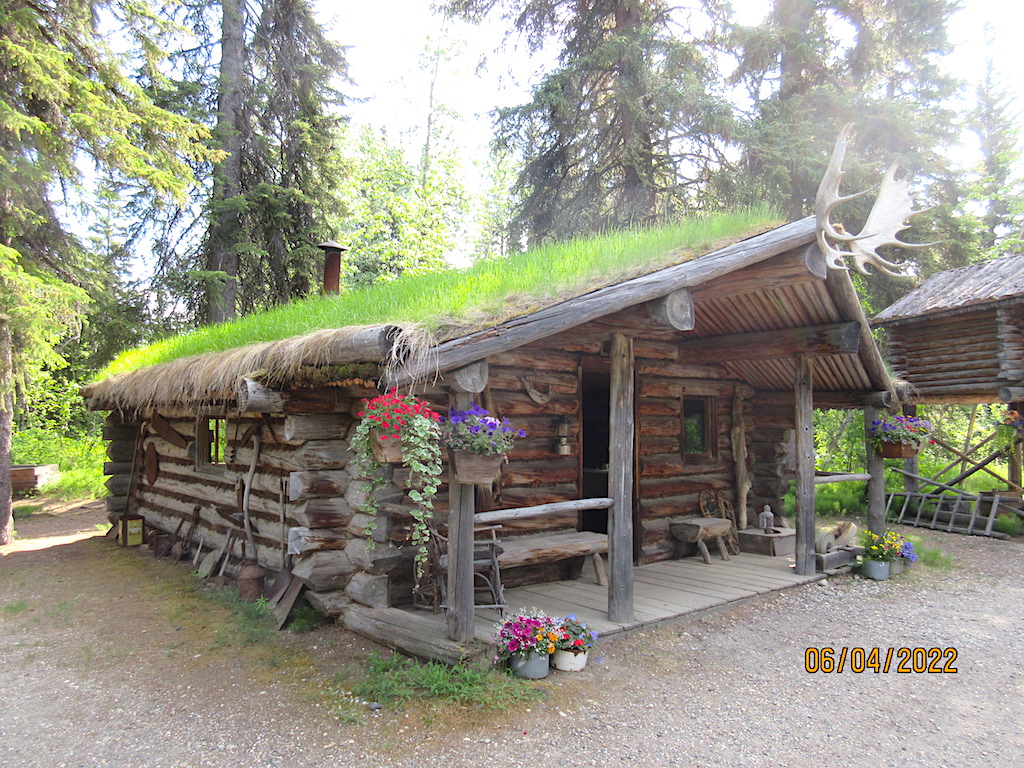
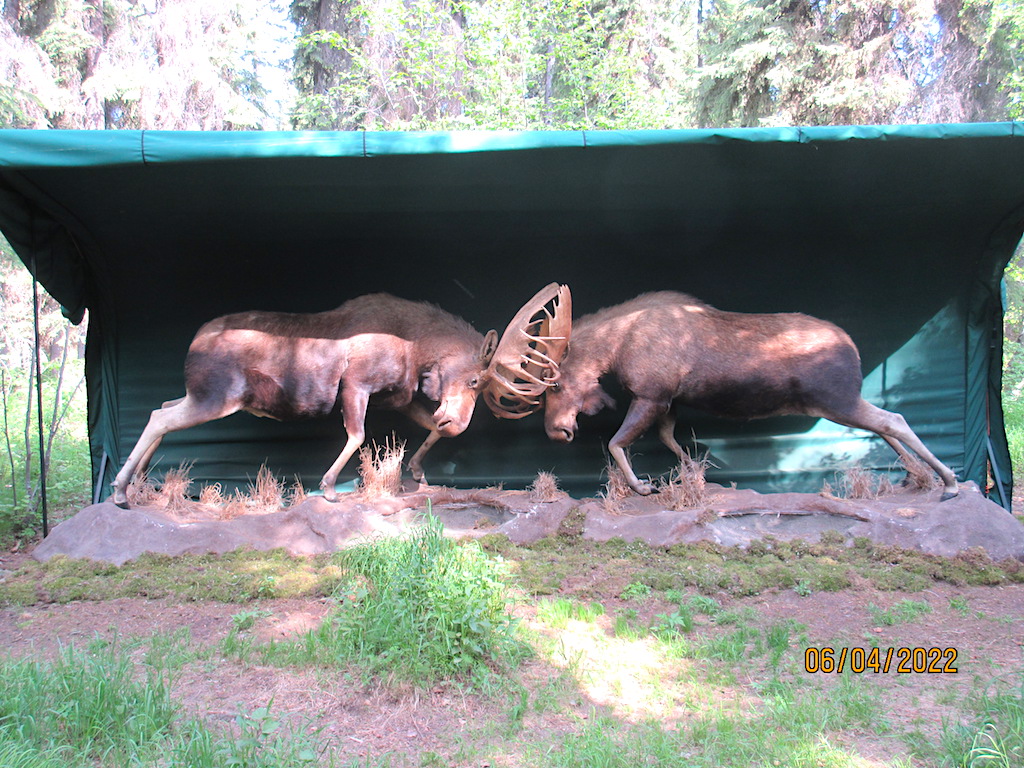
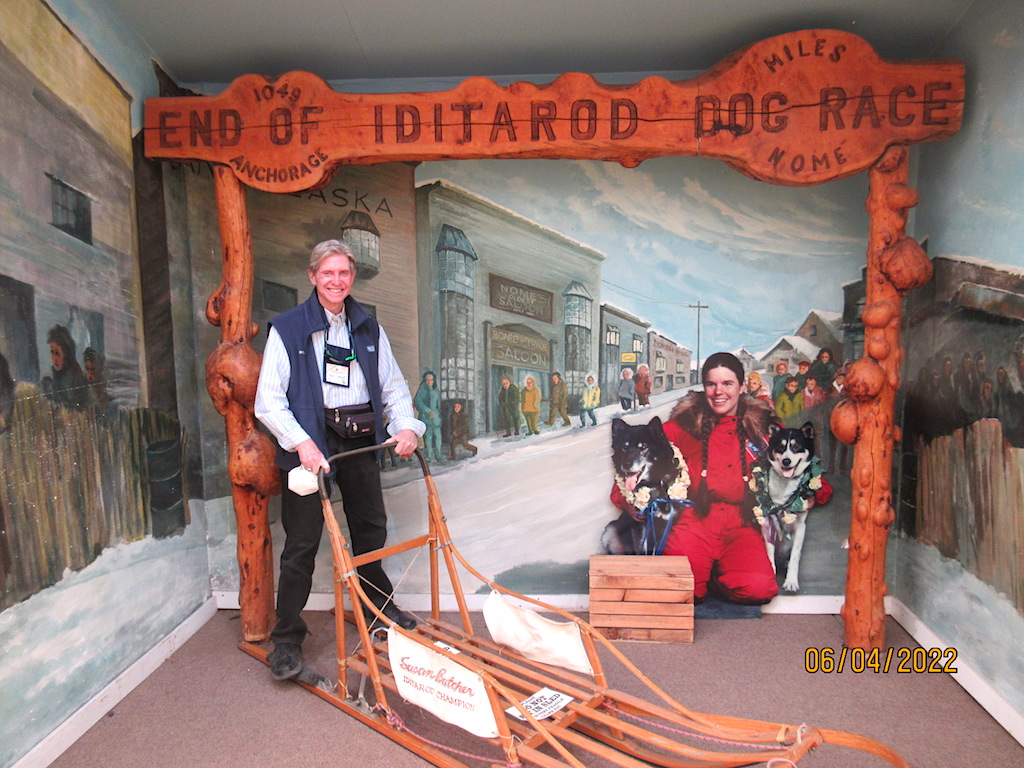
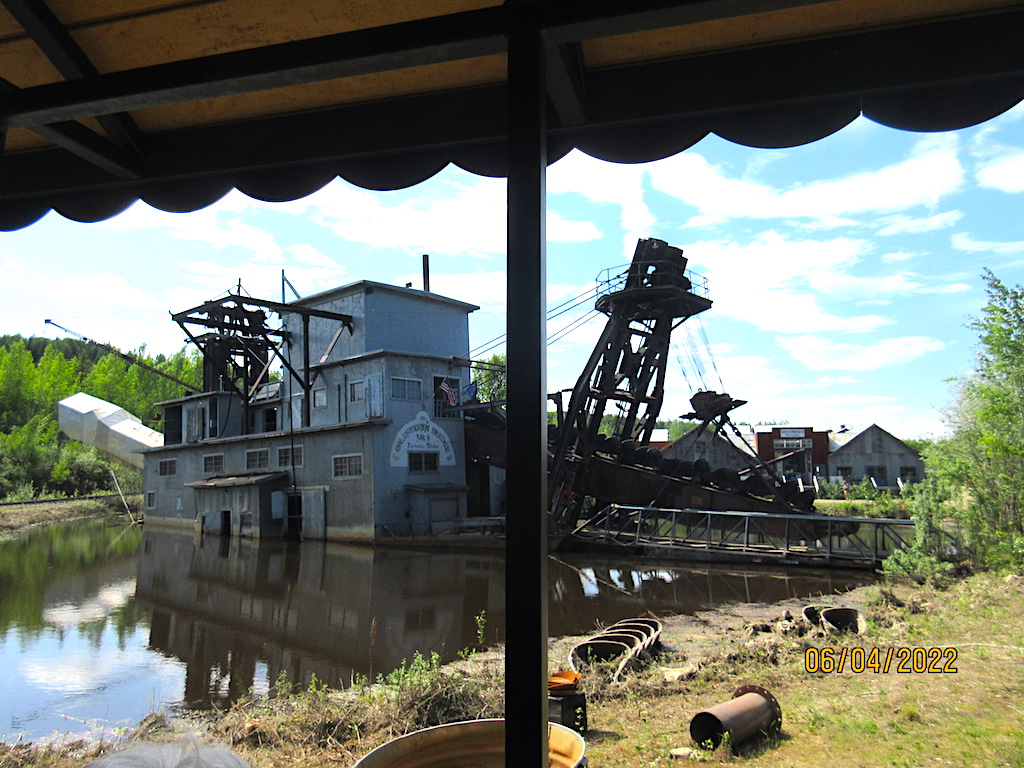
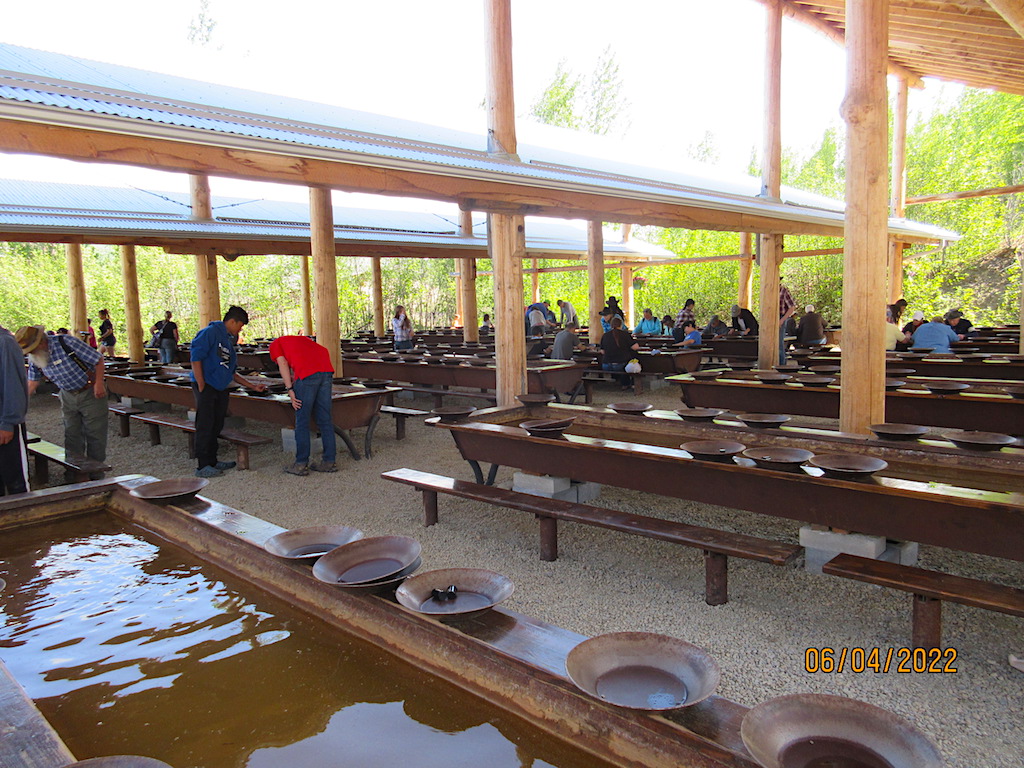

We had another beautiful, warm and sunny day; and it was a very busy day. We started off the morning with a coach ride to a sternwheeler paddlewheel riverboat. A local family by the name of Binkley has been in the area for over 120 years (Five Generations) and started the river excursion business in 1950. Today eleven members of the family are river pilots and they own several paddlewheel boats they operate during the months when the river is not frozen over. Our tour was on the Discovery III that is 156 feet in length and holds up to 900 passengers. Thankfully, the morning tour we were on only had a fraction (around 100) of that many passengers onboard.
Our first stop on the river cruise was for a demonstration of a bush pilot taking off and landing on the river. One in 70 Alaskans are licensed pilots and planes are used for transporting not only people, but supplies and cargo throughout Alaska. Our vessel was equipped with many television monitors where a guide narrated what we were seeing. The pilot of the plane was also equipped with a microphone and camera so we could hear directly from him about his experience as a local pilot. He took off from the river twice and landed once to demonstrate how smooth and easy it is for a plane to use the water as a runway.
Our next stop was at a sled dog training facility owned by the family of Susan Butcher who won the Iditarod race four times. Susan passed away from cancer but her husband and daughters have kept the family business going. Susan’s daughter Tekla was on shore with a microphone to tell us about some of the sled dogs and to give us a demonstration of the sled dogs in action. The dogs pulled her around a dirt track as she rode in an all-terrain vehicle instead of a sled.
We then experienced the merging of two rivers, the Chena River and the Tenana River, one with crystal clear water and the other with milky looking water from the minerals and debris collected from the melted ice and run off from the local mountains. This is similar to the merging of the rivers you can experience in the Amazon near Manaus, Brazil, although not as dramatic.
Onboard the Discovery III they were serving up unlimited free coffee and tea along with a bottomless supply of blueberry donuts…. so delicious you can’t just have one!
We then stopped at Chena Village created by the Binkley family to resemble the original Chena Athabascan Indian Village of the early 1900’s located near the site. We disembarked the boat and met two young girls who are students and from local native Indian peoples.
Located within the village they showed us a salmon trap located on the river where they can catch 1,000 salmon or more per day. After fileting the fish and cutting the filets on the diagonal, only held together by the skin, they would use a drying rack to dry the fish for several days. Once air dried they would hang the fish filets in a smokehouse for several more days to cure the meat for storage. A storage closet on stilts called a cache would be built high off the ground to keep the smoked salmon away from animals.
There were many old log cabins that had been gathered from the surrounding areas, disassembled and relocated here to show us how the people used to live. Many of the cabins were quite small in size, one room with an outhouse and no running water. Many had planted or sod roofs for insulation against the elements. Small wood burning stoves were used for heating and cooking.
The two young girls shared with us their traditional fur clothing and coats, as well as furs used in clothing, bedding and tent making. This was the first day we experienced Alaska’s least favorite animal, the mosquito. The mosquitos were out in force, with every turn you were busy swatting and waving them off of you.
We were given a bit of free time to explore some of the cabins and other exhibits. They had several taxidermy moose. Tekla was there with some of the sled dogs and she was signing books about her mother and the Iditarod.
After we completed the riverboat experience, we visited the Binkley family’s large gift shop and dining room where we had our lunch. They served up a family style meal at very long picnic style tables with benches. The meal included a green salad, bread rolls, a beef stew, a pot of vegetables and chocolate brownies for dessert.
Inside the gift shop they have a freezer where you can experience the Alaskan winter. The freezer was set to -40 degrees which is about how cold it can get on a winter day. We spent a few minutes in the freezer and that was enough to get the idea about the cold. Of course, we were dressed for a 70-degree day and not for a cold winter day.
We then took about a 30-minute coach ride to another experience owned by the Binkley family called Dredge 8. Dredge 8 refers to an old abandoned gold mine that is now designated as an historic site. It had been abandoned because the cost of extracting the gold from the earth became more expensive than that value of the gold found.
They have a very nice open-air train that takes you on a short tour of the mine before coming to a stop at the dredging platform and warehouse. The dredging platform building is three stories tall and we took a tour inside where you can see how the gold was brought out of the earth and separated from the soil and rock. While the train was waiting at the station they had a fiddle player playing and singing country songs.
Outside the warehouse they gave each person a bag of soil and they had hundreds of gold pans and stools staged so we could each experience gold panning. With the help of many guides we separated our gold from our earth and rocks and were left with the flakes of gold in our pans. We then took the gold we had panned inside to have it dried, weighed and valued at today’s gold price. Kent only ended up with about three flakes but Mark managed to find more than the average of $12; he ended up with $27 worth of gold flakes. At the price of gold, this is very little, but more than almost anyone else found.
On display in the warehouse were lots of historic photos of the mine, old mining equipment and a large nugget found on the site valued at $75,000 in today’s prices. You can actually hold the gold nugget and take photos of it. They also sold all types of gold jewelry, gift items, etc. Also, a nice treat were the endless trays of assorted Costco cookies, coffee and tea to eat and drink.
Here we also saw a section of the Alaskan Pipeline that is above ground due to the permafrost in this area where the pipe could not be buried underground. The 800 mile-long pipeline brought many people and jobs to Alaska when it was built between 1974 and 1978 at a cost of eight billion dollars.
In the evening we headed out to a 44-acre local heritage park called Pioneer Park where they have a variety of historical buildings gathered from around the city. There is also a small train and an old ship that you can tour. We had some Greek food before we went to a small theater to see a show called the Golden Heart Review. The variety show of singing and dancing has been running for many years. It has a small cast of just four performers accompanied by a pianist. The show was quick moving, funny and entertaining.
